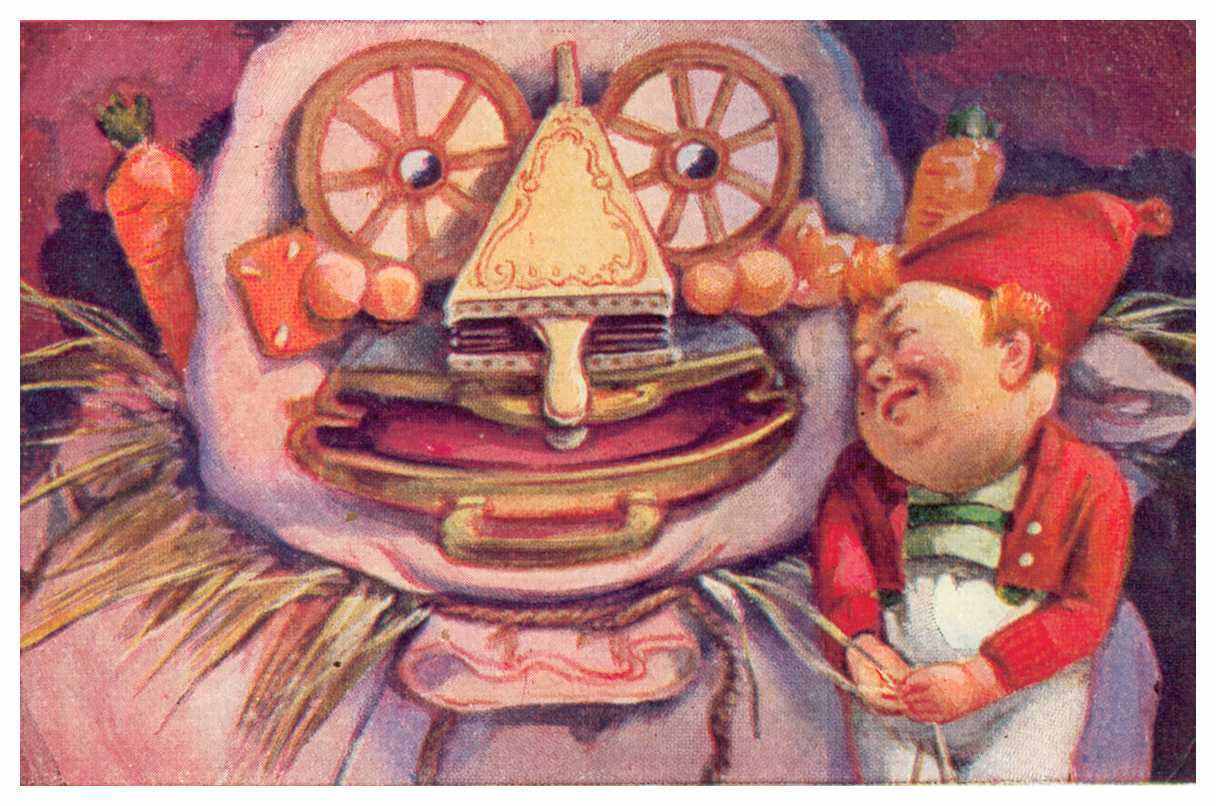

Dilldapp, a character invented by the German romantic poet Clemens von Brentano (1778-1842), is a dunce and a good-for-nothing. He runs away from home and at last finds somebody who does not abuse him and play tricks on him. His new friend is a monster whose face "was as large as a bale of pepper, its nose as wide as a bellows, its eyes as large and round as the wheels on a wheelbarrow, its mouth gaped open like the postman's bag.".
This description induces Stefan Mart to visualize Brentano's genial bogeyman in the manner of the Milanese painter Giuseppe Arcimboldo (1527-1593), who served three Austrian emperors as court painter in Vienna and Prague. Arcimboldo painted portraits of real and of allegorical persons like the four elements or the four seasons. What makes these portraits unique is that their features are represented by a person's attributes and the things he or she is associated with. Spring for examples consists entirely of flowers, the famous Librarian entirely of books. Arcomboldo portrayed his foremost sponsor, Emperor Rudolf the Second, as Vertumnus, an ancient Roman god of vegetation, entirely made up of blossoms and different kinds of fruit: Rudolf II. surrounded by The Four Seasons.
The surrealist painters of the first half of the 20th century considered Arcimboldo as one of their forerunners and as a founder-father of modern art. His influence is obvious in a portrait of the ancient mathematician and geometrist Euclid by Max Ernst (1891-1976).